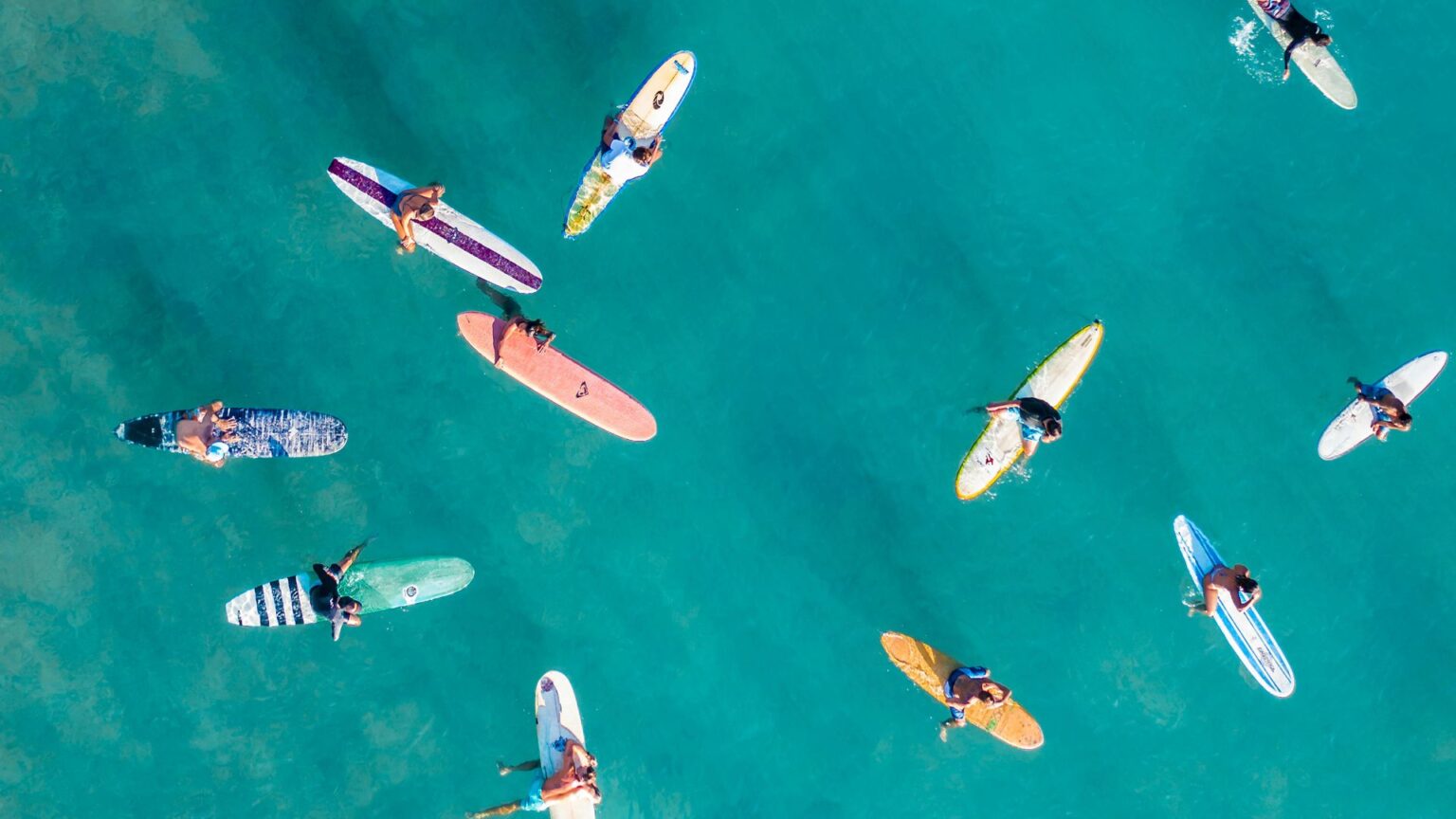The sport of surfing originated in the Polynesia Islands and many waveriders agree that its first introduction internationally was on the island of Waikiki, Hawaii. Surfers have ridden the waves of this world famous beach for years and the practice is deeply rooted in historical and cultural practices. Today, despite fancy hotels and restaurants dotting the beach, it’s still one of the more popular destinations for first-timers to learn the sport. Here’s why.
Before surfing was a competitive sport, it was a cultural and spiritual practice, with ties to Polynesia, Hawaii and Peru that trace back hundreds (if not thousands) of years ago. Historically, the chief was the most skilled surfer in Polynesia and was granted the best board made from the highest-quality wood. Thus, surfing was rooted in social class as well, since the chief and others in the ruling class had access to the best boards and beaches while the commoners were ostracized from some beaches. However, lower class surfers could climb the social ladder by impressing with their wave-riding skills. Even today, some beaches are gatekept for the locals and outside surfers are not welcome.
In Hawaii, islanders participated in surfing prayers in which they would ask the gods to bring them good waves and conditions. They would even bring out the kahuna (priest) to help them pray for optimal conditions and pray over their boards as they were being constructed. The art of building a board was as spiritual as the surfing practice itself. Hawaiians would choose from three types of trees, dig it out, and put fish in it as a religious offering to the gods. Craftsmen would then shape and construct the board for surfers.
Waikiki became synonymous with surfing back in the early 1800s, long before Hawai’i was part of the U.S. Hawaiian royalty would visit the village of Waikiki to surf and eventually built their homes on the beach, alongside the commoners that already resided there. At the time, only native Hawaiians surfed this beach. By the 1920s, tourists began to take an interest in Waikiki and the art of surfing.
It’s an ideal beach for first-timers to learn because it has beginner-friendly conditions. A reef offshore helps create long, gentle waves that give newbies ample time to stand up on the board. The waters are shallow and conditions are calm, which still invites newcomers to this day.
Many of the hotels on Waikiki offer organized surf lessons through private surf schools. Locals recommend taking a lesson to start, not because the conditions are dangerous but because there are typically many beginners out on the water. If you’re a surfing-curious traveler, be sure to approach Waikiki and the art of surfing with respect and recall that it is a privilege to surf in a place that has such deep cultural and spiritual roots to the locals.




